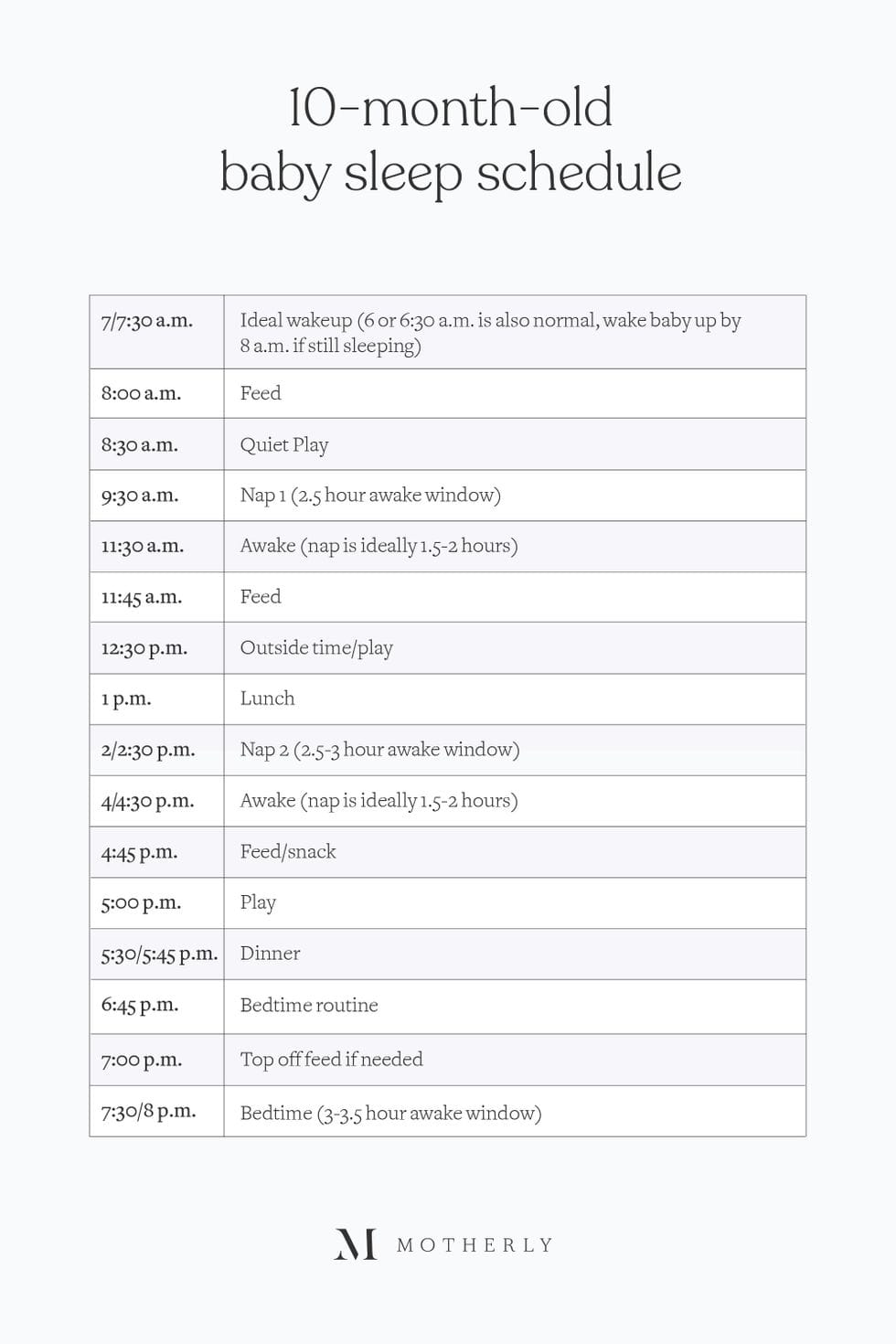How much sleep does a 10-month-old baby need?

Sleep guidance and tips for parents from a certified sleep consultant for babies.
Table of Contents
Your baby is inching towards that first birthday milestone, which might feel both impossible and also wildly exciting. But if you’re a parent who is still struggling with getting your baby to sleep, every second of those 10 months is probably weighing heavily on you.
First things first, let me just say: you’re not alone. As the mother of a baby who refused to sleep more than 10 minutes at a time as a baby, the struggle is real. Some babies need more guidance in the sleep department than others.
But at 10 months, there are a few strategies you can take to support healthy sleep habits.
How much sleep does a 10-month-old baby need?
Any baby under the age of 12 months requires anywhere between 12-16 hours of sleep per day, according to the American Academy of Sleep Medicine.
Rachel Mitchell, a certified pediatric and maternal sleep consultant and founder of My Sweet Sleeper, explains that the biggest shift that happens around 10 months is that your baby is likely taking two consistent naps.
“This means you are able to follow a more predictable daily schedule with them, although you are still tracking awake windows and adjusting as needed,” she notes.
Related: Baby Feeding Guides & Schedules
An ideal two-nap schedule will look something like this: 7 a.m. wakeup, nap #1 around 9:30 a.m. – 11/11:30 a.m., a second nap 2/2:30 to 3:30/4 p.m., then finally, a 7/7:30 p.m. bedtime.
“Once your baby makes this transition they should still be getting a minimum of 3 to 3.5 hours of day sleep, and for many babies closer to 4 hours,” Mitchel adds.
Here’s a more detailed look at what a 10-month-old baby schedule can be.
10-month-old baby sleep schedule

Wake windows for a 10 month old
Wake windows for a 10-month-old vary from 2.5-3.5 hours. That means that the maximum amount of time your baby should be awake before taking a nap or going to bed for the night should never be more than 3.5 hours. Ideally, the wake times during the earlier parts of the day will be shorter, while the last wake window of the day—that occurs right before bedtime—will be the longest, at 3.5 hours. This helps promote a regular sleep pattern and sets your baby up for success to sleep a longer stretch at night.
As Michell reminds us, it’s also very important to pay attention to your baby’s own sleep cues to uncover what the ideal wake windows are for you. Some babies will need shorter wake windows, while others may need longer wake windows. You should never force your baby to stay awake or go to sleep just to stick to a schedule—instead, try to learn their own sleep cues and adjust your sleep schedule to fit your baby’s needs.
Related: 10-month-old baby milestones
Sleep tips for babies
Sleep with a 10-month-old can be full of twists and turns. It might seem like just as you’re getting used to one stage of sleep, it’s time to switch things up.
As you’ve probably figured out by now, a lot of navigating baby sleep is about balancing going with the flow with set patterns and routines that support your little one’s sleep habits. This month, you’ll probably need to be somewhat flexible as your baby establishes a firm two-nap sleep habit and starts to become more active as well. Here are some other sleep tips to keep in mind:
- Do nothing. Sounds strange, right? But this one is important, because Mitchell explains that around 10 months old, your baby enters the stage of more exploration. For instance, you may find that your baby is starting to pull up on things and stand in their crib. And if you’re worried about how all that exploration will affect their sleep, Mitchell advises you to just let it go. “If you notice your baby is doing this and it is interfering with sleep, try to give your baby the space to practice this skill on their own without intervening too frequently,” she suggests.
- Try sleep training. 10 month can be a great time to try sleep training if you haven’t already—your baby should be well past the sleep regression stage and if they’ve already been settled in the two-nap schedule for a while, it might be a sign they’re ready for some additional sleep training at night. And remember: there are many different methods of sleep training, so you don’t have to do anything that doesn’t feel right for your family.
- Don’t let your baby nap on the go. This one can be a challenge, but whenever possible, try to avoid having your baby sleep in places outside of their crib at home. Naps in the car or on-the-go are probably not going to be giving your baby the benefit and rest of a full sleep cycle like they’d have at home, and may actually disrupt their routine.
A version of this story was published September 14, 2021. It has been updated.






























